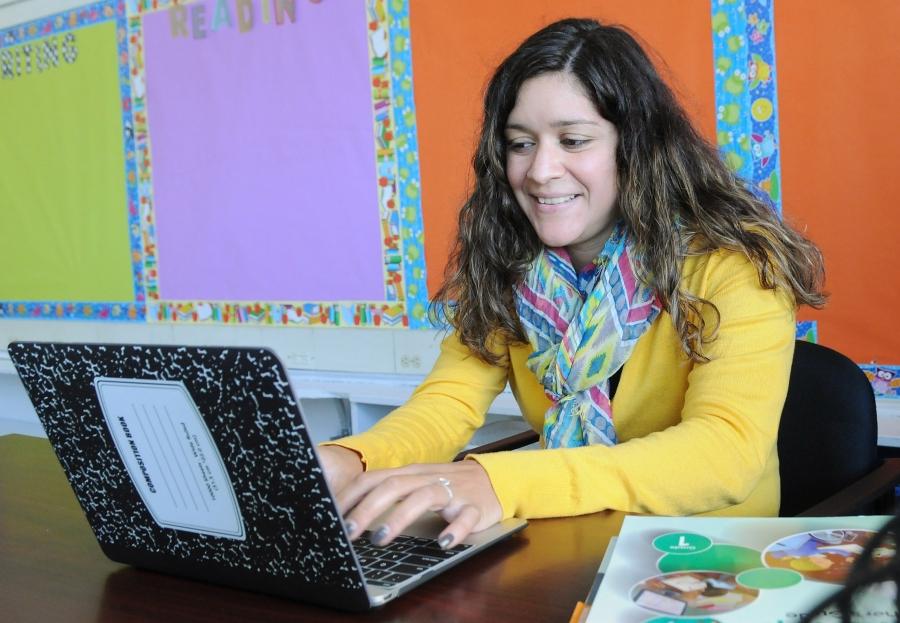
Michelle Minnelli, a UFT Teacher Center coach at PS 188 in Brooklyn, says educators at the school have embraced Google Jamboard.
When schools went remote in the spring and many teachers shifted to Google Classroom for the first time, they found a program that is easy for novices to use. But as a highly versatile platform, there’s a lot more to be learned about Google Classroom. Three New York City teachers, all seasoned Google Classroom users, share their tips and favorite tools for teaching remotely with this powerful program.
Alina Diner, a math teacher at Emma Lazarus HS in Manhattan, advised teachers to make things simple and organized for students. First, she said, don’t force students to navigate around to find materials. “Everything a student needs to do that assignment should be in that assignment. They should not have to go looking for it,” Diner said. “Make it super user-friendly.”
Caitlin Schein, a special education coordinator at Innovation Diploma Plus HS in Manhattan, suggests explicitly teaching students to organize their digital work. “It’s important to teach students executive functioning skills for doing work online,” she said.
In a physical classroom, Schein said, teachers help students organize their desks and folders, and in an online space, “teachers should also spend a day teaching students how to develop their Google Calendar, organize folders on Google Drive and prioritize windows in their web browser.”
Scaffolding student work is more important than ever now, according to Schein. “Students — and their parents who may be helping them — need more hand-holding and support,” she said. “It’s important for teachers to develop work that is meaningful and achievable for students in this environment.”
Michelle Minnelli, a UFT Teacher Center coach at PS 188 in Brooklyn, says educators at her school have embraced Google Jamboard, an online interactive whiteboard. “It’s basically a collaborative tool where students can answer questions and use post-its and images,” she said. Teachers at PS 188, Minnelli said, are using Jamboard the same way they would use physical chart paper. The teaching team has even used it to collaborate and plan among themselves.
The tool is especially useful for students who may be camera shy. With Jamboard, she explained, they have a platform to express themselves and show their thinking without being live on video.
Diner integrated Parlay Ideas into Google Classroom this spring and found it valuable. “It allows students to simulate mathematical discussion,” she said. “I’m able to put a prompt in, and students are able to comment on the prompt first and then comment to each other.”
Since Diner works at a school for English language learners, Parlay Ideas allows her to include sentence starters to springboard online conversation among students in English.
Schein said she continues to use some of her favorite online tools — FlipGrid, Padlet and Screencastify — in conjunction with Google Classroom.
FlipGrid allows students to record short videos of themselves. Teachers can opt to make the videos private or open them up for classmates to see and respond.
Padlet functions like a bulletin-board discussion wall for students to share short responses and is “a good interactive resource for generating text discussions,” said Schein.
Screencastify lets teachers record instructions from their own computer screen. “It’s a great resource to use as a tutorial platform for students to learn how to navigate a website or to model work for students to watch at a later time,” Schein said.
Sandy Scragg is an instructional technology specialist with 20 years of experience in New York City public schools.